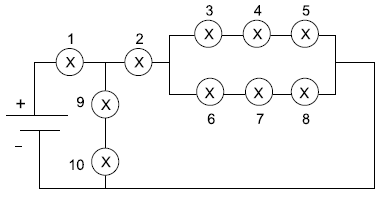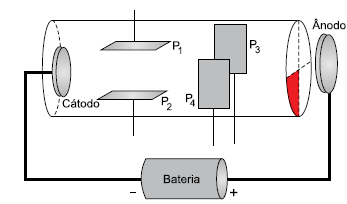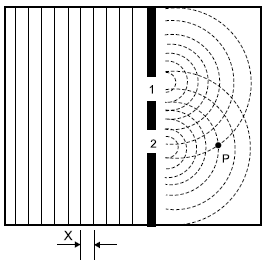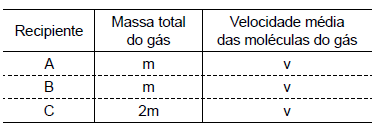Questões de Vestibular
Foram encontradas 68.627 questões
Resolva questões gratuitamente!
Junte-se a mais de 4 milhões de concurseiros!
Tomando ao acaso um desses voluntários, assinale a alternativa que apresenta, corretamente, a probabilidade de ser uma mulher e de ela morar fora do Rio de Janeiro.
Assinale a alternativa que apresenta, corretamente, quem fez mais pontos na primeira etapa.
Assinale a alternativa que apresenta, corretamente, a quantidade de maneiras distintas que ele pode dispor essas medalhas de modo a manter as medalhas de prata todas juntas e as medalhas de ouro todas juntas.
Considerando que a primeira e a última eram de ouro, assinale a alternativa que apresenta, corretamente, a quantidade de medalhas de ouro.



Se na lâmpada 6 for instalado um dispositivo de pisca-pisca, quando ela se apagar, certamente se apagarão as lâmpadas
A figura representa o tubo de Crookes, no qual há dois pares de placas, sendo um par disposto horizontalmente (P1, P2) e o outro par, disposto verticalmente (P3, P4).

Para que o raio luminoso emitido pelo gás ilumine a parte vermelha do tubo, as placas P1, P2, P3 e P4 devem estar eletrizadas, respectivamente, com cargas de sinais

A denominação dos fenômenos F1 e F2, a grandeza indicada em X e o valor da amplitude da onda em P são, respectivamente,

Sabendo-se que a temperatura de um gás ideal é diretamente proporcional à energia cinética média de suas moléculas, a relação entre as temperaturas TA, TB e TC é
Nessa escala, a temperatura de 66 °R, corresponde à temperatura de

Considere que o tubo da experiência esteja preenchido por um líquido de densidade desconhecida, que a altura h seja 50 cm, que a aceleração da gravidade seja 10m/s2 e que a pressão atmosférica local seja 1 × 105 Pa. A densidade desse líquido dentro do tubo é de

Considere que a deformação causada pelo bloco ao cair sobre o jump foi de 10 cm e que a aceleração da gravidade local seja 10 m/s². Nessas condições, a altura H, em relação à linha de referência, é de



